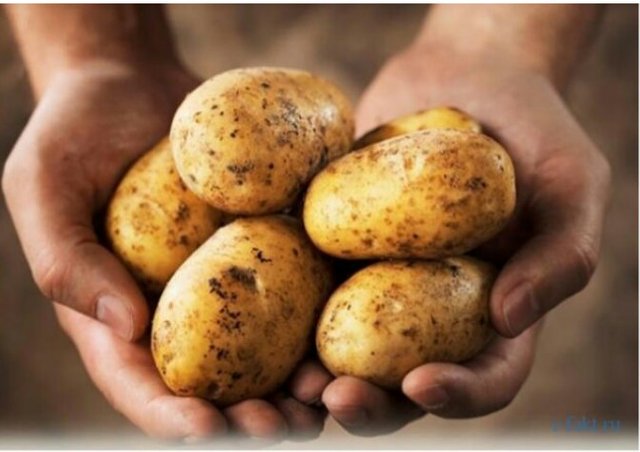How potatoes "conquered" Europe

İlk kez, Avrupa'da XVI. Yüzyılın ortalarında patates ortaya çıktı, ama onlar uzun zaman eski dünya sakinleri tarafından yenilmedi. Patatesin korkunç hastalıklara neden olduğu söylendi. Buna ek olarak, bazı Avrupalılar "üstler" yemeye çalıştılar - zehirli meyveler, çiçeklenme alanında oluşan.200 yıldan uzun bir süredir, etkili kişilerin kıyafetlerini süslemek için sadece patates çiçekleri kullanıldı. Fakat insanların bu “toprak elma” yı yemesi mümkün değildi.Fransa'dan Louis XVI bir hile kullanmaya karar verdi: 1787'de silahlı bir bekçi, bir palamarın etrafına konuldu ve geceleri direkler bırakıldı. Patatesler için daha iyi bir reklam düşünmek imkansızdı: gece, köylüler, gizlice tarlaya doğru yol aldı ve yasak meyveyi “çaldı”.Yakında ülkede bir dizi savaş ve devrimler geldi ve insanlar daha önce sevilmeyen bu kök bitkisinin besin değerini tam olarak takdir edebildiler.Fakat Prusya Kralı II. Büyük Kralı, bu sorunu daha kolay çözdü: o, arazilerinde patates ekmeyi reddeden köylülerin burunlarını ve kulaklarını kesmekle tehdit etti.Şimdi Avrupalıların birkaç yüz yıl önce patates yemeklerinden nasıl kurtulacağını hayal etmek zor. Zamanımızda, Avrupalılar patatesleri, örneğin Amerikalılar'dan çok daha fazla tüketiyorlar, ancak bu kök sebzeler bize denizaşırı ülkelerden geldiler.Belçika'da, bu bitkinin tarihini ve Amerika'dan Avrupa'ya zor yolculuğunu anlatan çok sayıda sergi içeren bir patates müzesi bile var.Ve ülkemizde, patatesler hemen tanındı. Her ne kadar bunu Rusların diyetine sokmaya yönelik ilk girişimler Peter Büyük tarafından üstlenilmişti. Rusya'da birçok reform gerçekleştirdi, ancak “patates reformu” açıkça başarısız oldu.XIX yüzyılın ilk yarısında bile, köylüler onları patates yetiştirmeye başlama girişimlerine karşı isyan etti. Fakat 1839 ve 1840'da Rusya'da zayıf bir ekmek hasadı vardı. İmparator Nicholas 1842'de patateslerin zorunlu ekimi konusunda bir kararname yayımlayan insanları beslememe konusunu ciddiye aldım. Rusya'da vahşice bastırılan bir “patates isyanı” dalgası patladı. Rusya hükümdarı vatandaşları, o zamanlar patates çağırıldığı için bir “şeytanın elması” yetiştirmek istemiyorlardı.Ancak, ben her zaman bir kırbaçla hareket etmedim, bazen de ona bir havuç verdim: patatesleri dikmek için para ödülleri ve meritorel sayfalar verildi. Yavaş yavaş, patates Rus tarlalarına aşina oldu ve hatta “ikinci ekmek” olarak adlandırmaya bile saygı duymaya başladılar.
For the first time potatoes appeared in Europe in the middle of the XVI century, but for a long time the inhabitants of the Old World were not eaten. There were rumors that the potato causes terrible diseases. In addition, some Europeans tried to eat "tops" - poisonous berries that are formed in place of inflorescences.For more than 200 years, only flowers of potato were used, which were used to decorate the clothes of influential persons. But it was not possible to force people to eat this “earthy apple”.Louis XVI of France decided to use a trick: in 1787, an armed guard was put up near a potato field and left office at night. It was impossible to think of a better advertisement for potatoes: at night the peasants secretly made their way to the field and “stole” the forbidden fruit.Soon there came a series of wars and revolutions in the country, and the people were able to fully appreciate the nutritional value of this previously unloved root crop.But the King of Prussia, Frederick II the Great, solved this problem much easier: he threatened to cut off the noses and ears of those peasants who refuse to plant potatoes in their plots.Now it’s hard to imagine how Europeans could do without potato dishes a few centuries ago. In our time, Europeans consume much more potatoes than, for example, Americans, although this root vegetable came to us from overseas.In Belgium, there is even a potato museum, which contains a huge number of exhibits telling about the history of this plant and its difficult journey from America to Europe.And in our country, the potato did not immediately receive popular recognition. Although the first attempts to introduce it into the diet of Russians were made by Peter the Great. He carried out many reforms in Russia, but the “potato reform” clearly failed.
Even in the first half of the XIX century, the peasants rebelled against attempts to force them to grow potatoes. But in 1839 and 1840 there was a poor harvest of bread in Russia. Emperor Nicholas I, who issued a decree on the mandatory planting of potatoes, seriously took up the problem of the people. A wave swept across Russia “Potato riots”, which were brutally suppressed. Nika did not want the subjects of the ruler of Russia to grow up “the devil's apple,” as the potato was called at that time.However, Nicholas I did not always act only with a whip, and sometimes he lured him with carrots: for planting potatoes they were given money prizes and meritorious sheets. Gradually, potatoes became familiar on Russian fields and even began to be respectfully called “second bread”.
İmage1
Congratulations @camal! You received a personal award!
You can view your badges on your Steem Board and compare to others on the Steem Ranking
Do not miss the last post from @steemitboard:
Vote for @Steemitboard as a witness to get one more award and increased upvotes!
Congratulations @camal! You received a personal award!
Click here to view your Board